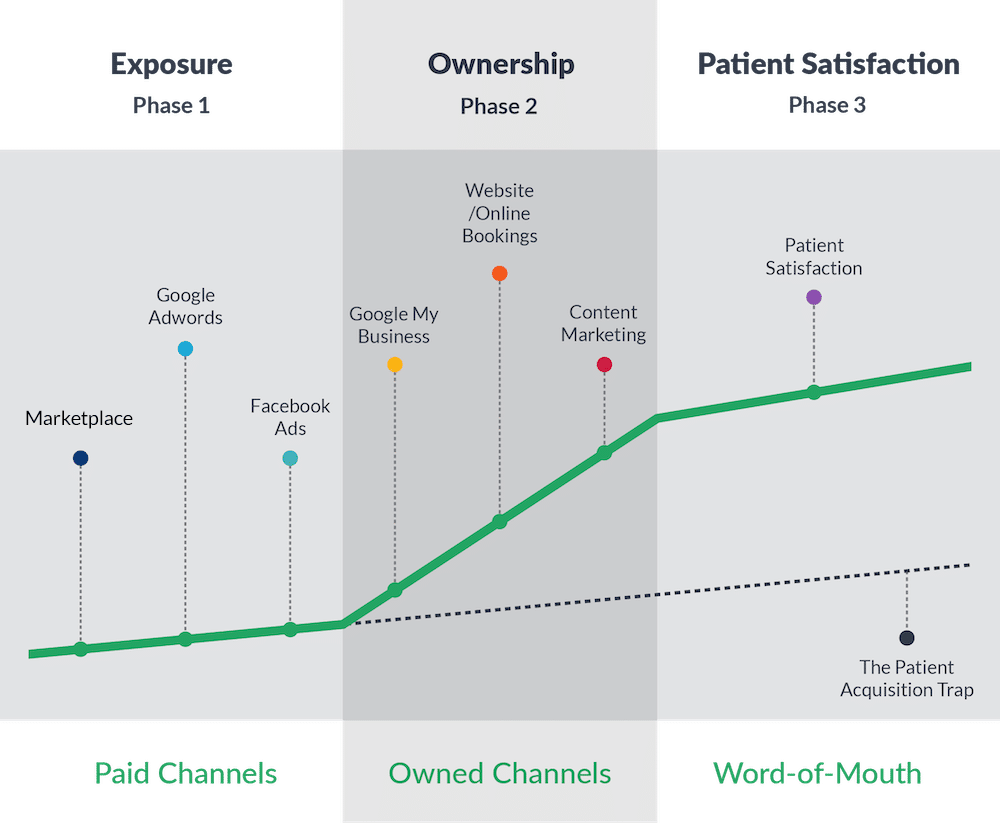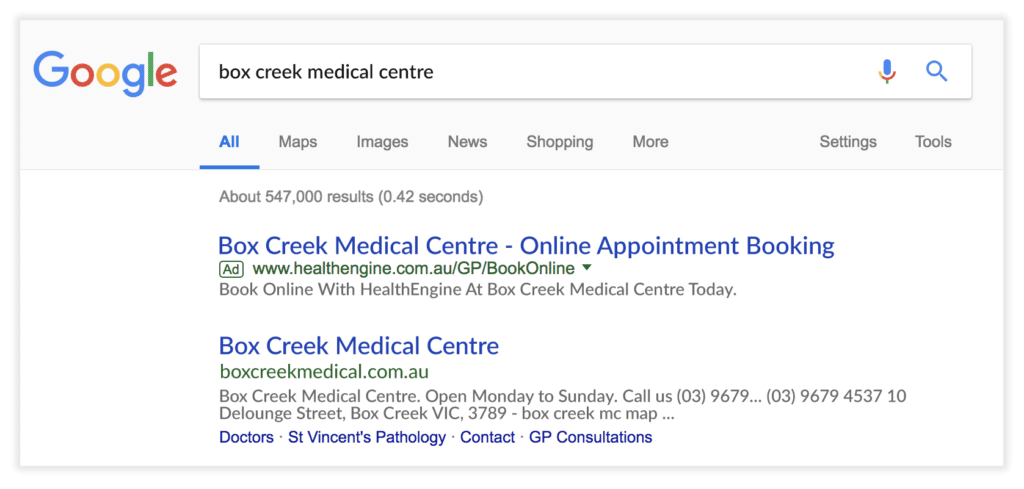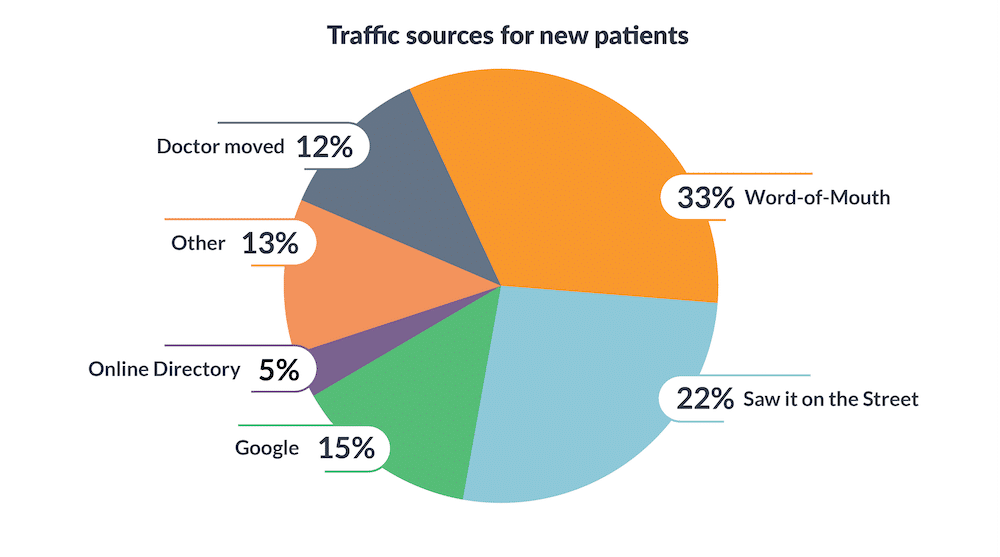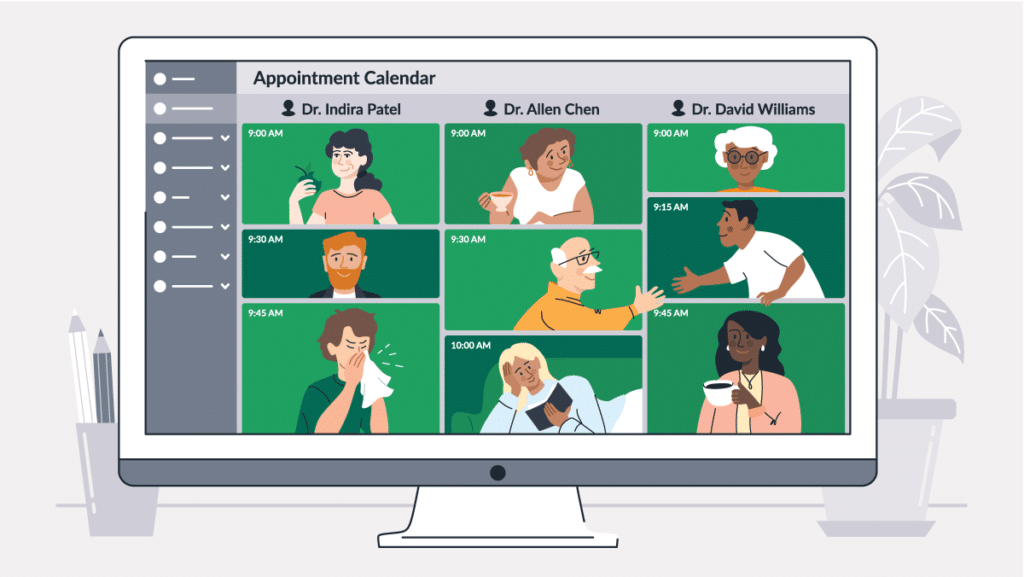In this article we aim to shine the light on the insights we’ve learned from helping over 3,000 clinics grow. Despite the fact that every medical centre is unique in its own way, there is a typical path taken by best practices when it comes to the channels they use to achieve growth without jeopardising continuity of care. This path is what we refer to as the 3 Phases of Practice Growth.
What are the 3 Phases of Practice Growth?
The 3 Phases of Practice Growth are exposure, ownership and patient satisfaction.
Exposure involves paid channels like Google Adwords, Facebook ads and marketplaces. These channels come first because they bring results almost immediately. However, these methods are expensive and the payment structures don’t scale well (as you grow the costs grow). They are useful in the short term, but less practical in the long term.
Ownership involves owned channels like Google My Business, your own website and original content you create. These channels take a little longer to produce results, but they are much more cost-effective at scale because they have fixed costs that don’t stretch when your clinic grows.
Patient satisfaction is exactly what it sounds like, satisfied patients who recommend you to their networks through word-of-mouth. Patient satisfaction takes the longest amount of time to generate value, but it is by far the most influential and cost-effective channel for attracting and retaining patients.
In essence, both paid channels and owned channels are stepping stones toward word-of-mouth through patient satisfaction.

Pictured: The 3 Phases of Practice Growth and the channels involved in each phase.
Phase 1: Exposure
Paid Channels: Google Adwords, Facebook Ads, Marketplaces
All clinics start here. You open the doors to your practice and need patients fast. So you set up some Google Ads and you list your clinic on a marketplace. It makes sense: paid channels are excellent platforms for getting some exposure so you can first get your name out there. They help get the tap flowing.
The problem with the exposure phase is that as your bookings grow, so do your paid channel fees. It means over time they become less and less cost-effective. This is why, once you’ve got some initial traction in your appointment book, you should start the transition to Phase 2 to avoid falling into The Patient Acquisition Trap.
The Patient Acquisition Trap
The patient acquisition trap is when a clinic ends up paying for new patients when these patients would have booked with them anyway. To learn more about the trap and it’s underlying causes, read our full article: The Patient Acquisition Trap.
Phase 2: Ownership
Owned Channels: Google My Business, Your Own Website
To avoid The Patient Acquisition Trap you realise that you need to start investing in channels that you own. You set up a Google My Business account, so you start showing up in local search. Then you set up your own website so you can take online bookings without exposing your patients to other practices in the local area.
Read: How to Get Your Clinic Displaying on Google (with Google My Business)
Escaping The Patient Acquisition Trap
After some time you see that your website is naturally showing up on Google when someone types in your clinic name or suburb.

Seeing that your own website is appearing in the first 3 or 4 non-paid search results you are confident that you can turn off your paid ads and survive on your own. After all, with your website appearing there is no need for a directory listing that essentially charges you to compete with yourself.
Phase 3: Patient Satisfaction
Word-of-Mouth
At first you are nervous about leaving paid channels behind, but then you remember that word-of-mouth is twice as powerful as Google (an owned channel) and six times more powerful than marketplaces (paid channels).

Source: 2017 Patient Survey of 1,141 Australian patients.
You put some trust in your decision and focus solely on patient satisfaction.
“It is the patients themselves who become your very own marketing army. Each of them plays their own small part in recommending you to their friends and family.”
The result is that you’re free to run your practice the way you want to run your practice. All the while enjoying a never ending supply of new patients.
Need help some help?
Talk to our team to get help finding out where you sit. We’re happy to provide advice on how to build your owned channels and have a Patient Feedback Tool that allows you to accurately measure where your new patients are coming from.



